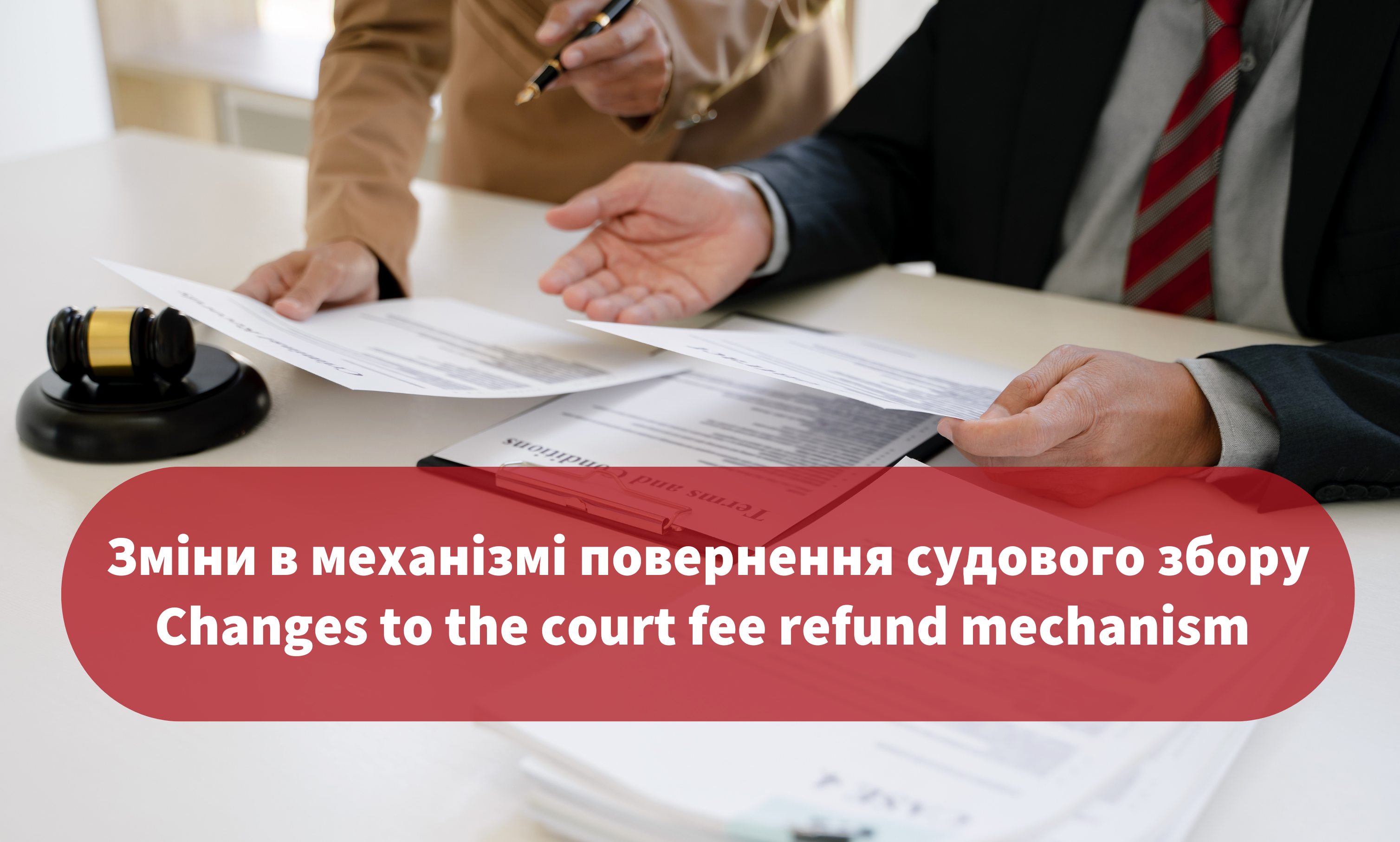Changes to the court fee refund mechanism
The issue of court fee refunds raises many questions. People often pay the fee, but the case may remain unexamined for various reasons, claims may be modified during the proceedings, or the case may be closed. More detailed information about the circumstances under which a paid court fee can be refunded and the legal grounds for such refunds can be found in our article at this link.
In this article, we will take a closer look at how exactly the procedure for refunding the court fee from the state budget has changed, what is new in the legal regulation, what steps to take, and what to pay attention to in order not to lose your money.
Until 2025, the refund procedure was paper-based, slow, and complicated. However, as of 7 January 2025, an updated mechanism came into effect that simplifies the process — thanks to electronic document exchange between the courts and the Treasury.
Order No. 606 of the Ministry of Finance of Ukraine dated November 26, 2024, amended the Procedure for Returning (Transferring) Funds Erroneously or Excessively Credited to the State and Local Budgets and introduced a unified electronic format for refunding court fees.
From now on:
- the payer submits an application for a refund to the court;
- the court sends an electronic submission to the Treasury authorities;
- the Treasury automatically processes the refund based on this submission.
How to Properly Prepare a Refund Application
To ensure the funds are returned, the payer must pay special attention to the careful preparation of the application, which is subject to specific legal requirements. To receive a refund of the paid court fee and avoid any errors during the transfer of funds, the applicant must indicate in the application (in this order):
- full name of the payer;
- taxpayer registration number (or passport series and number if no tax number exists);
- date and number of the court decision that has entered into legal force (in case of refund other than erroneous payment);
- address of residence and contact phone number;
- amount to be refunded (transferred);
- reason for refund (transfer) of funds from the budget;
- name of the bank;
- location of the bank where the recipient's account is opened;
- account details;
- card account number of the recipient (if available).
Important! Along with the refund application, the original or a copy of the payment instruction confirming the transfer of funds to the budget (court fee receipt) must be submitted. Therefore, be sure to retain it in advance. If submitting the application electronically, the copy of the payment instruction must be provided with a qualified electronic signature (QES).
A sample application can be found at this link.
Next Step
Based on the application, the court generates an electronic submission in the remote servicing system “Treasury Client – Treasury” regarding the refund of the court fee from the budget and sends it for execution to the relevant Treasury body. A copy of the court decision is no longer required — the court itself specifies all necessary details (ruling number and date, amount, budget revenue classification code, etc.) when generating the electronic submission. Therefore, the payer is no longer required to submit all documents in paper form to the Treasury.
Once the Treasury receives the electronic submission, it verifies the completeness of the provided information. If the submission is incomplete or incorrectly filled out, the Treasury will send an electronic message via the system to the sender (the court) within the next working day, indicating the reason for rejection. Within three working days, the court that submitted the request must prepare an updated submission with the corrected details that caused the rejection. As a result, the involvement of the court fee payer in the process occurs only in exceptional cases — such as when it is impossible to establish the refund account details.
If the application is completed correctly, it is possible to avoid problems with the refund and ensure the speed and transparency of interaction between payers, courts, and state finances. Although the new procedure is not without flaws (mainly due to the heavy workload of the courts), these changes improve citizens’ access to justice, protect their right to reimbursement, and minimize bureaucracy.
If you need a consultation regarding the possibility of refunding your court fee or assistance in drafting your application, you can always book an online consultation with a lawyer on the PravoVsim platform via this link.
